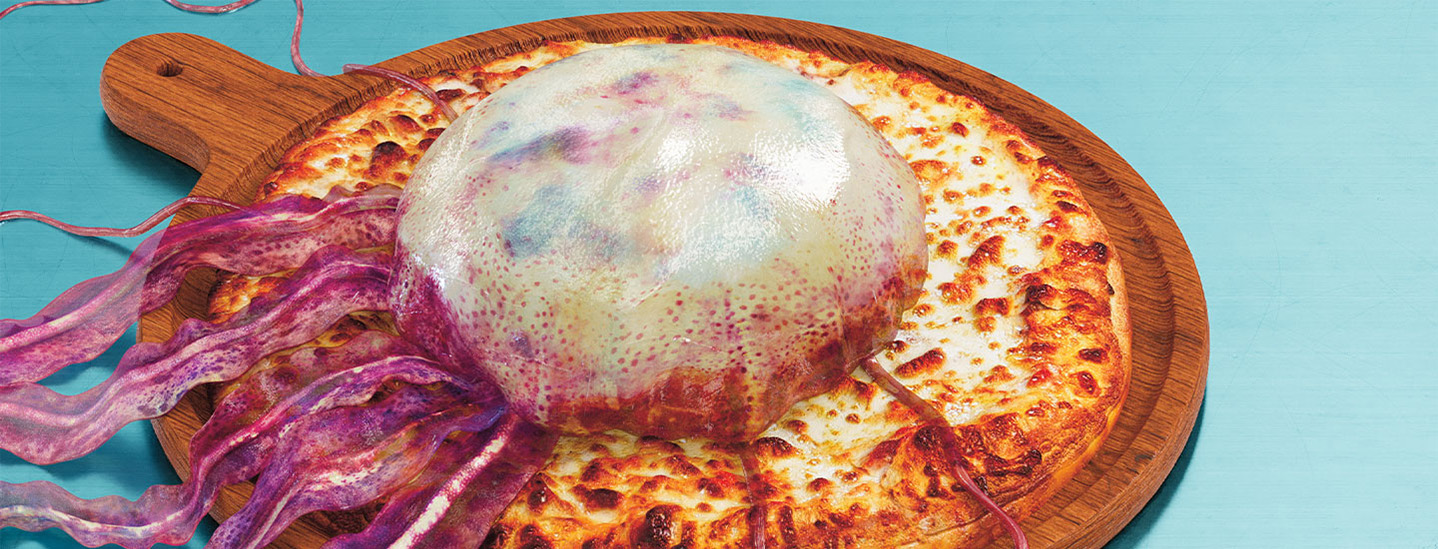The chef at a restaurant in Italy opens a cooler and pulls out an ingredient that’s new to his kitchen: a jellyfish. He boils a pot of water and plops the slimy sea creature in—tentacles and all. This cooks the jellyfish and neutralizes its venom so the jellyfish can be safely consumed. After that, the chef chops, seasons, and serves the experimental dish to a group of scientists. They sample the chewy morsels, which taste briny like the sea.
Jellyfish aren’t currently found on European menus. But in recent years, their populations in the Mediterranean Sea have skyrocketed. Some scientists think the surplus of protein-rich jellies could be a potential new food source in the region.
At a restaurant in Italy, a chef boils a pot of water. He opens a cooler and pulls out an ingredient he hasn’t used before. It’s a squishy, slippery jellyfish! He drops the sea creature into the pot—tentacles and all.
Cooking the jellyfish removes its sting so it’s safe to eat. After that, the chef chops, seasons, and serves up the experimental dish. His diners are a group of scientists. They taste the chewy jellies, which are salty like the sea.
Jellyfish aren’t usually on the menu in Europe. But some scientists have started thinking they should be. Jellyfish populations in the Mediterranean Sea have been growing rapidly. That makes them a potential new food source in the region.

